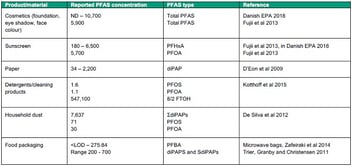Biosolids management in the context of new PFAS safety guidelines
Chemicals used in fire-fighting foams, or PFAS, are a hot topic of national concern. Contamination of the water supply has been found in towns like Katherine, Northern Territory. There is a growing body of scientific evidence to demonstrate that these chemicals have an adverse impact on human health and it is likely that they are undesirable in a human environment.
The focus on PFAS has resulted in a PFAS National Environmental Management Strategy being developed by the Heads of EPA as a collaboration across Australia. As part of the Strategy, safe limits for PFOS and PFOA have been proposed in biosolids. PFOS and PFOA are two of the key compounds of concern within the whole range of PFAS chemicals.
The safe limits proposed for biosolids by the PFAS NEMS are very low and potentially have a significant impact on beneficial use of biosolids.
PFOA – 0.1 mg/kg
PFOS – 0.009 mg/kg
Whilst the methodology of estimating safe limits in biosolids is well established, the difficulty of predicting safe limits lies in the absence of good, scientific research data to base the risk calculations on. The old conundrum of protecting human health and the environment versus allowing safe use of biosolids once again raises its head.
The ANZBP has also been active in this area conducting a National Survey of PFAS in Biosolids and also calculating recommended safe levels of PFOS and PFOA in biosolids.
The National Survey showed a median values of 0.003 mg/kg of PFOS was detected in biosolids and 0.002 mg/kg PFOA. Maximum values detected in biosolids were 0.386 mg/kg and 0.05 mg/kg respectively. Based on the data it’s unlikely that PFOA will be an issue in biosolids, unless there is a known problem with contamination in a particular area. PFOS however is sometimes found higher than the proposed safe limits and this could have an impact on some catchments.
The ANZBP also used the most recent information to calculate safe limits of PFOS and PFOA in biosolids. Based on the accepted National Environment Pollution Management methods the ANZBP recommended that regulation of PFOA does not appear necessary, based on the National Survey Data, however limits for PFOS were proposed.
Unrestricted Use – 0.3 mg/kg
Agriculture – 4.2 mg/kg
The large difference in the numbers proposed by the PFAS NEMS and the ANZBP approach is striking. The difference can be explained in part by the PFAS NEMS using very recent data on plant (or crop) uptake of PFOS and the paucity of data in this area. The ANZBP is maintaining a dialogue to ensure that the data and assumptions upon which any biosolids limits are based are both reasonable and reflect best biosolids management practice.
Watch this space as it will continue to develop in the coming months.
More on PFAS:
https://www.youtube.com/watch?v=1TCyqRKHCaE&t=17s


